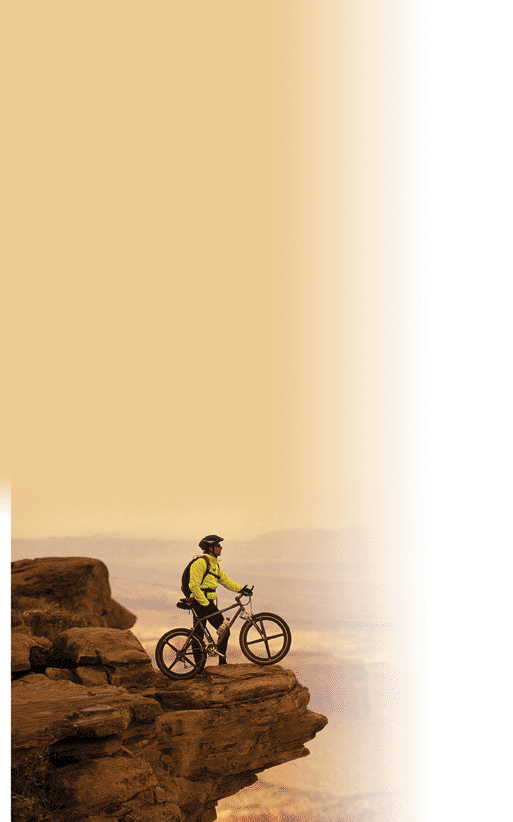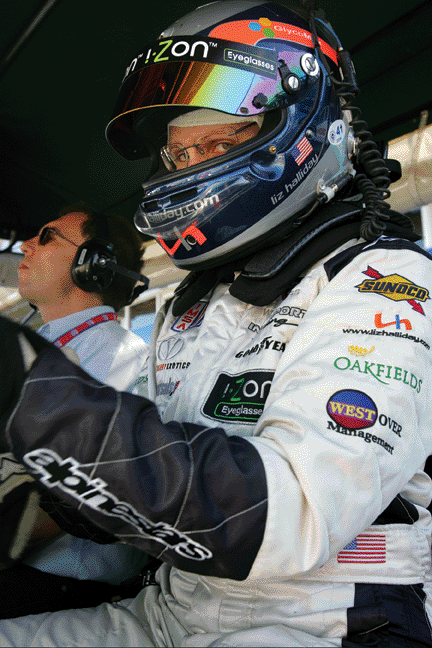
Selecting the right lenses for today�s hottest sports trends keeps your practice and your patients in the winner�s circle
By Karlen McLean, ABOC, NCLC
While winning is important, sports safety is paramount. Clear vision and eye protection are two critical keys to safety�that�s why all sports lenses should be polycarbonate, Trivex, or a proven, impact-resistant patented material that meets ANSI and ISO high-impact standards. Once safety issues are covered, then let the games begin. Whether competing in a contest or working on a personal best, good lens choices can give wearers an edge.
The following sports are some of the most popular choices for good health, fun, and honing competitive edges. Having the right lenses for the right sport keeps players in fine visual form, making playing more comfortable and boosting performance. These lens recommendations are subject to the
athlete�s personal preference, but are suggestions for each sport.
Wet and Wild
For watersports, polarization is crucial to remove glare from the water�s surface. Tint color and density choice may depend on the time of day and weather while on the water more than the type of water fished. Yellow or copper are best for early morning or evening fishing (low light conditions), while dark brown, copper or gray are best for mid-day (bright light conditions).
When it comes to fishing, one pair of glasses may not be enough, just like one fishing rod doesn�t work for every type of fishing.
Offshore fishing: Mirror treatments and AR lenses are useful. Traditionally, gray is recommended for deepwater fishing, but some athletes prefer brown or copper. Yellow or light copper tints are for haze or low light conditions, while gray tint is for true-color viewing and bright sunlight.
Freshwater fishing: Again, mirror and AR can boost vision. Traditionally, brown is recommended for shallow-water fishing, but some people prefer a yellow or copper tint. Yellow tint helps cut through haze and fog while providing visual definition.
Fly fishing: Recommend AR lenses with a copper tint. Dark copper for bright flats and medium to light copper for cloudy days and inland lakes and streams, especially forested rivers and streams.
Kayaking: The properties of the lens must provide visual definition and color recognition, and cut through visual clutter. Opt for mirror and AR. For color, try yellow or light copper tint for haze or low light conditions, gray tint for true-color viewing and bright sunlight.
Surfing/wakeboarding: Darker polarized tint dens-ity may inhibit
visual definition and is not generally suggested for surfing or wakeboarding. Try a light tint and AR. Yellow or light copper tint helps provide additional clarity in low light conditions and provide the visual definition that is key to reading depths and details of the waves.

For sports such as racquetball and tennis, contrast-enhancing lenses include yellow tints and specialty tints. Hydrophobic AR or special anti-fog coating helps prevent lens fogging.
Duffer�s Debate
In golf, lens color should enhance contrast, depth perception, and viewing details. Photochromic lenses may not protect against all glare. One pair of glasses often doesn�t solve every visual situation for the best vision on the links. Two pairs of eyewear, such as one pair for distance (fairways) and one pair for intermediate/near (greens/scorecard), may be needed.
Polarized lenses and PALs for golf are under debate in the optical industry. While patient preference determines the correct choice, here are some current tips and viewpoints.
Polarized: These lenses cut glare on the golf course for a more comfortable viewing experience, coupled with new performance traits. There are many golf-appropriate polarized choices: golf-specific colors, tint densities, and transmission levels available today can help ECPs guide golfers to the right polarized lenses for their needs.

PALs: It�s patient adaptability that impacts the scorecard in this matter. Some patients like PALs for their ability to bring up the intermediate zone when putting. But, some don�t like PALs for what they perceive as an interruption with three-tired vision zones. Technology breakthroughs like digitally surfaced PALs have golf-friendly features such as smoother transition zones.
If PALs don�t work and single-vision isn�t the solution for presbyopic golfers, round-seg bifocals can be set in the frame for golf by decentering the seg temporally. This allows for a clear putting view and scorecards can be read by looking down and sideways into the segment.
Extreme Sports
When it comes to extremes, good vision can make the difference between a day at the race and a day in danger. Polarized and anti-reflective lenses help maintain clear vision.
Climbing/hiking: Copper or yellow tint provides color contrast, enhancement, and definition. Lens tints should work in a full range of light conditions, and a medium density may be best. Match the tint to the light conditions the climber is in because visual clarity is key.
Mountain biking: Try copper or yellow tint for color contrast and to maximize useful light. Color should work in a full range of light conditions and may be best in a medium density. Because cyclists move rapidly through changing light, photochromic lenses are typically not recommended.
Running/triathlon: Try gray or gray-green tint for true color visibility. Photochromics are a possibility, but will not eliminate distracting or blinding glare or work well in rapidly changing light conditions. EB



Captions
On land or water, good lens selections ensure safety. Providing a multitude of options in lenses will help athletes meet all of their visual demands. Images: Definity from Essilor, right, and Vision-Ease, below
From the racetrack and the road to the links, the proper sunlens can help improve athletic performance with improved clarity and comfort. Shown top to bottom: iZon lenses from Ophthonix; photochromic lenses from Transitions; and AR Crizal Sunlenses from Essilor
Side Bars
The Finish Line
While the right lens color can make a defining difference in performance, specialized lenses and treatments finish the sports package. Consider the following:
Polarization and AR: the anti-glare features of polarized lenses and anti-reflective lenses help define and hone vision by blocking two of the most compromising and uncomfortable hazards to seeing clearly�glare and reflection.
Photochromic lenses can be helpful to athletes who vary action from dark-to-light environments.
Mirrored lenses help absorb heat and help soothe the eyes while giving players a competitive edge, since opponents can�t see their eyes.
Sports-specific contact lenses are available for those who have trouble with frame comfort and fit. Try grey-green or amber tints.
Soft Sports
While extreme sports these aren�t, promoting the uniqueness and practicality of specialty �sports� eyewear with a dash of humor can make sales.
1. COOKING EYEWEAR Tailgaters and those who participate in cooking contests can benefit from protective eyewear�think a splash of hot grease to the face.
2. SPORTS FAN EYEWEAR Soccer moms and anyone who attends sporting events will enjoy comfort and protection in the sun; AR lens� crisp vision; and wrap lens� protection from dust, dirt, and debris.
3. SHOPPING EYEWEAR Photochromic lenses darken in the parking lot and lighten inside. AR helps eliminate reflections off windows. Digitally surfaced PALs ease reading price tags, seeing items on a shelf, and peeking down aisles.



